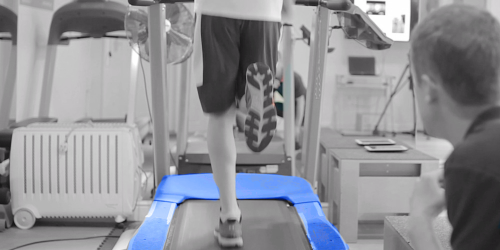

Train smart this year
It’s the same at the start of every year: more runners and cyclists on the road, a crammed gym and a dying need to burn off the Christmas calories. But by doing too much (volume), too hard (intensity) and too often (frequency), do we leave ourselves at risk of becoming injured?
Load Management and Planning
Through December and maybe even longer, many of us have decreased our training levels or not done anything at all. In this period, your body’s capacity to withstand a certain amount of work and load would have decreased.
But, what are you likely to do? Run an hour run twice a week and faster, work harder in your circuits, and forget about the pain and carry on in your spinning class. In doing this, you are running the risk of breaking down and being in pain!
So what should you do?
If you are new to running
Some of us hit the New Year and it’s our resolution to ‘get fit’ again and running is an easy way of doing so. It is, however, a better idea of having 2-4 weeks of doing some basic body weight exercises to make your body little more robust, but also to be more body aware: we have discussed this previously here: http://www.synergyphysio.co.uk/news/but-i-run-i-dont-have-to-be-strong-do-i
From here, you should start off on short, steady paced, interval runs (e.g. 1 minute run 1 minute walk x 5) 3-4 x per week. Slowly build up the periods running relative to walking (e.g. 5 min run 1 min walk x 5) until you can run consistently for around 20-25 minutes.
Once you have built up a comfortable total weekly mileage you should try to split your runs into a mixture of a slow run, tempo run, medium race pace run and a longer run. You can see some examples with our half marathon training plans here: http://training.synergyphysio.co.uk/
If you'd like some help with your training plan, why not come to our free 'Get the basics right' training day on the 14 January? Click here to register for that.
Managing Load
If you have simply had a break over the Christmas period, managing load is most likely your key variable to have a good grasp of. While your cardio may improve fairly quickly initially, your ligaments, bones, tendons and muscles need time to recover and adapt.
A rudimentary approach is to increase EVERYTHING you do GRADUALLY. This includes strength work, hill work, how many sessions you do a week.
A classic example is running volume: increasing total volume 10-15% per week is a golden rule of running which has been around for years and actually has some evidence to back it up too.
This principle of gradually exposing your body to more work should be applied to all aspects of your training. If you have had 3 – 4 weeks off during the holiday period, it would also be sensible to cut your weekly mileage down by 30-40%, and slowly build up again using the 10% rule.
Maintenance of Mobility
As you perform more work, your body is likely to tighten up and become a little stiff as it tries to recover. With this happening, it may be a good idea to make sure you maintain your range of movement, particularly at some key joints.
The two main areas are your ankle, calf complex and your hip. Reduced ankle mobility can contribute to various different types of injuries (see our previous blog on maintaining ankle mobility here and will need a bit of TLC.
How we can help:
In our performance packages we look at targeting all of the areas above whilst looking making your running technique as efficient and injury free as possible.
For more information, please look here: http://www.synergyphysio.co.uk/running-school/






